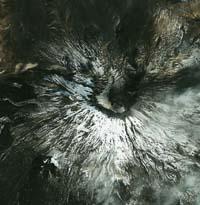Does the desert prolong its claws?
2006/06/01 Roa Zubia, Guillermo - Elhuyar Zientzia Iturria: Elhuyar aldizkaria
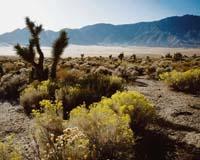
The human influence
This means that the word itself disappears has to do with the concept of agriculture, at least in its origin; the desert is a lost land for agriculture in regard to the etymology of the word. Over time the meaning has changed, it has expanded, but the initial concept has not disappeared. Many of the definitions of desertification continue to consider the fertility of the land.
The land that has lost fertility is becoming a desert. However, this idea does not explain what is guilty of this loss. But you can think that he is a human being.
No one doubts that the human being has a huge influence on the environment. In short, agriculture is an activity that, to a greater or lesser extent, is dedicated to desertification. The influence is high when much is required on the ground and very inadequate methods are used. It does not always turn the area into desert, but it always has a certain ecological repercussion. For example, the creation of an edible plant area often requires deforestation, one of the first steps of the desertification process. And in cases where forests are not depressed, the organization of nature is broken for the benefit of man. In one way or another, agriculture always has influence, of one type or another.
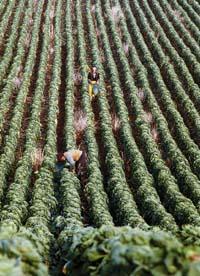
It is true that agriculture does not remove vegetation, but replaces it. Where there were forests and underwood crops have been introduced, artasoros or other types of plants, in growing plantations. And although the number of plants has not been reduced, this substitution impoverishes the land. In short, the presence of monospecific plants in a given field breaks the balance of fertilizers, since there are plants that acidify the soil, others that consume nitrogen or phosphorus, etc. There is only one species that balances the amounts of fertilizers. In the long run, the substitution of the vegetation causes serious imbalances of the land.
Humus
This soil imbalance must also take into account waste. In many types of agriculture the land is "cleaned" after harvesting, preventing waste from being deposited in the soil.
However, nature does not work like this, but any dead leaf, stem or flower remains on the ground and enters the process of formation of humus. It is a process of at least several weeks. The dead plant is withered, dried, deformed and decomposed. It goes from being a litter to being nothing. Apparently it is lost, but not really lost, it becomes humus.
This process of transformation of humus is a consequence of the activity of many living beings and occurs very slowly. At first, the dead plants form a layer of vegetable remains; in the forests is a litter and in the meadows a dried grass, flowers or exhausted roots. Insects and many other invertebrates benefit from this prosperous layer. Small insects, spiders and mites and, at microscopic level, bacteria and fungi also intervene in digestion from plants directly or from remnants of invertebrates.
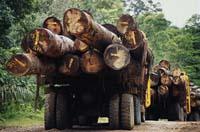
For agriculture, however, invertebrates and microbes die and there is no digestion. In addition, before sowing the soil turns with the plough, putting in contact with the oxygen. This is why no humus is generated because it needs an oxygen-free environment.
Not creating humus does not mean that land is in the process of desertification. Each area evolves according to local conditions. But where there is extensive agriculture no humus occurs, this impoverishes the land and creates conditions for the expansion of the desert.
Animals animals animals animals animals animals
In addition to agriculture, many other human activities have influenced the land surface. Livestock, for example, has had great importance; on the one hand, deforestation and, on the other, the excess of animals has eliminated vegetation. When nature is unbalanced because there are many living beings of the same species, regardless of whether they are human or animal. When the resources of an area are exhausted, the land surface is unbalanced. In fact, livestock farming is the main factor causing the expansion of deserts.

On the other hand, the human being has cleared the forests, not only for planting or for animals to have grasses; he has cut trees in order to exploit them, giving priority to several species. Depending on tree species, the underlying vegetation is different. In this way, in many cases, non-recoverable plants are lost.
Experts in the investigation of the expansion of deserts mention other activities such as the origin of the transformation or disappearance of vegetation. The construction of open pit mines, for example, has had a great impact, and the construction has done nothing more than say.
Heavy machines used in construction compact the soil. In the compacted lands the growth of the vegetation is reduced and, above all, the filtration of the water. These areas facilitate or, at least, allow the expansion of the desert.
Erosion of erosion
The problem of not creating humus is related to compacting the land. In both the natural cycle of water is modified. The unaltered soil is a permeable material. And it is permeable thanks to the action of animals and microbes, to this process of formation of humus. In short, the fertilizers containing humus are dissolved in the water, so they are absorbed by the plants from their roots. The roots grow with the plant and sustain the soil.
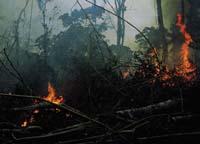
A very striking example is the mouth of the Ebro. Today there is a large delta, but five hundred years ago there was no such deltas, it extended for a few years to reach the current form. In fact, the origin of the delta was the result of the brutal deforestation of the Pyrenees. XVI. In the nineteenth century, the Spanish government needed trees to build boats that needed wood. Deforestation caused a strong erosion and eroded land formed the delta of the Ebro River.
Torrential rains and fires
The climate also causes erosion. Water erosion can depend on the climate. The paradox is given that in some territories where it rains little, the rain it makes is made in the form of intense rain, with a lot of force, and an effect occurs contrary to what can be expected: a strong erosion occurs due to the rain. In these areas, usually, there is not much vegetation and the wind also erodes the soil.
It is a natural, not human process. However, if human activity eliminates vegetation, the expansion of the desert can be considered artificial or, at least, as a process accelerated by man.
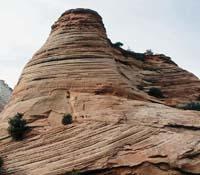
Another paradox occurs in the case of fires. In nature fires occur; an area can be inflamed naturally, for example, in the forests is not strange. And those fires are within the cycles of nature. Fires are necessary to maintain balance.
That's what they learned in the natural parks of the United States, where fires are essential for the advancement of some species. Since Yellowstone, Yosemite and similar places, the tendency of watchmen was to turn off fires. It is logical from the point of view of conservation. However, over the years, they realized that in some species, for example, the sequoias were in an increasingly serious situation. They needed fire to live; among other things, the fire cleaned the surrounding area. Therefore, the fires in the natural parks ceased to disappear. They controlled themselves, but did not systematically shut them down.
The problem of fires is measure and frequency. The man-made fires break the natural balance, because they are many and in many cases completely destroy the territory. As with other factors, natural fires have a measure and human activity quickly breaks the balance that this measure gives to nature.
Sum of factors
All these factors do not directly convert the lands into deserts. They are auxiliary factors. Deforestation and land impoverishment are not synonymous; agriculture does not completely exhaust fertilizers; not creating humus does not mean that vegetation does not grow. They are not automatic effects cause-effect. The desertification process is more complex, it is not the same everywhere and does not depend on a single factor.

A gradual process consists in transforming a field into a desert, is the sum of many factors. On desolate soil, for example, despite the years of large flocks, the land needs something else to become a desert. But if the climate is heated in the area and torrential rains cause erosion, for example, this area is on the way to desertification. Sometimes a fertile zone is lost, although the environment is still fertile, but it is usually the expansion of an already existing desert.
That is why experts want to analyze the origin of these factors. Who is guilty of desertification, nature, or man? It is clear that many of these factors are due to human activity, but it is not easy to know whether the expansion of a particular desert is a natural process. It is difficult to determine the degree of human influence.
However, before wondering whether human influence is high or low, one must ask whether the expansion of deserts is taking place. In some cases there is no doubt. No one doubts that Lake Chad is drying up and that as it dries, the surrounding desert expands. But in many other places it is not clear whether desertification is taking place.
United Nations Opinion
At the planetary level it is very difficult to determine to what extent human action arrives. However, there are official data from the desertification process. According to those responsible for the United Nations Environment Programme, 30% of the land surface is becoming, to a greater or lesser extent, desert. In addition, 6% of the land surface is suffering a great desertification, they are unrecoverable territories. These data were published in 1984 at a conference held in Nairobi. According to them, the sum of the areas of the territories in desertification is equivalent to the total area of America, 33 million square kilometers.
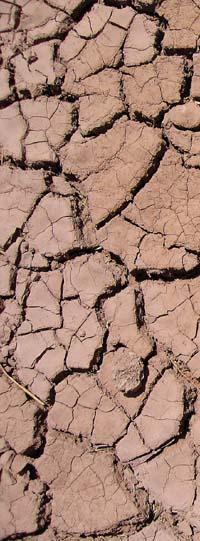
The data of the United Nations are representative. However, are they correct data? Not all experts agree on it. According to some, this data has been blown up by the United Nations Conference itself, in order to have the excuse of assigning money to various projects.
Critics have been published in various sources, such as the Newscientist, the New York Times and some books. David S. G. G. Thomas and Nicholas J. Desertification published by geographers middleton: One of the most important examples is the book Exploding the Mith.
According to these geographers, the scientific factors of desertification are not sufficiently known. Therefore, if they are not known, it is not possible to accurately measure the influence of these factors. And, in line with this central idea, they criticize four points, generally accepted by most experts.
In the first place, they question the data provided by the United Nations, that is, that a third of the terrestrial surface is suffering a process of desertification, data that has not been measured, but has been extrapolated and, although from the point of view of advertising is a strong idea, is a data "invented".
The second point is that arid zones are fragile and sensitive ecosystems; these experts say that no, according to the conditions, their state is reversible.
The third point has to do with society. They accept that desertification is one of the main causes of the poverty of the peoples, while geographers Middleton and Thomas consider that the origin of poverty is the policies and bad economic systems.
The last point refers to the importance of the United Nations; according to the authors of the book, desertification has become an institutional myth, but it has not yet been shown that the United Nations measures improve the situation.
There is no question that desertification is taking place, but it may not occur to the extent it is announced. Who knows, it can be a political and economic problem, more than biological.
